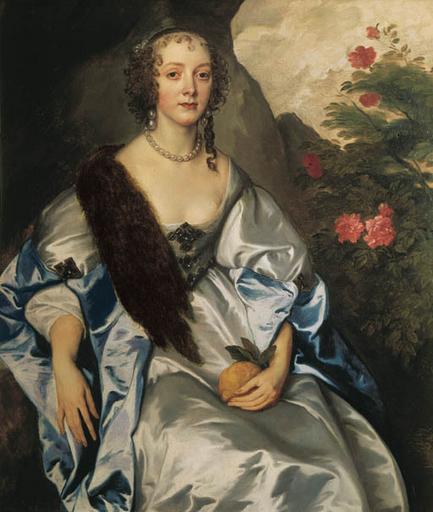MAKE A MEME
View Large Image

| View Original: | Elizabeth_Savage,_Lady_Thimbleby.jpg (512x605) | |||
| Download: | Original | Medium | Small | Thumb |
| Courtesy of: | www.flickr.com | More Like This | ||
| Keywords: people According to Christie's: Lady Elizabeth Thimbleby was the third daughter of Thomas Savage, Viscount Savage, of Rocksavage, Co. Chester, and his wife Elizabeth, eldest daughter and co-heir of Thomas Darcy, Earl Rivers (d.1639/40), who became Countess Rivers in her own right following her father's death. The sitter's elder brother, Sir John Savage (c. 1603-1655), succeeded as Earl Rivers in 1640. She married Sir John Thimbleby, of Irnham Hall, Lincolnshire, in September 1634. This portrait was first published in 1987 by Professor Müller- Hofstede in 1987 (op.cit.), who identified the sitter as Lady Elizabeth by comparison with the celebrated double portrait of Lady Elizabeth Thimbleby and her sister Dorothy, Countess of Andover (now in The National Gallery, London see fig.1). In that portrait the sitter's sister is shown receiving roses, the flowers of Venus, from a cupid and it is thought that it was most probably executed at the time of her marriage to Charles, Lord Andover, later Earl of Berkshire, in April 1637. In the present portrait the sitter holds a lemon in her lap, which Müller-Hofstede, by analogy with Italian sixteenth-century portraits, considers to be a symbol of faith and love. The roses in this portrait may also allude to love and Müller-Hofstede suggests that it may have been executed shortly after Lady Elizabeth's marriage in 1634, following van Dyck's return from Brussels in the spring of 1635. However, Dr. Christopher Brown, in his catalogue entry for the portrait in the 1990 exhibition, suggests that stylistically the portrait is very close to the National Gallery painting, and that it is probably from the same period, circa 1637. According to Christie's: Lady Elizabeth Thimbleby was the third daughter of Thomas Savage, Viscount Savage, of Rocksavage, Co. Chester, and his wife Elizabeth, eldest daughter and co-heir of Thomas Darcy, Earl Rivers (d.1639/40), who became Countess Rivers in her own right following her father's death. The sitter's elder brother, Sir John Savage (c. 1603-1655), succeeded as Earl Rivers in 1640. She married Sir John Thimbleby, of Irnham Hall, Lincolnshire, in September 1634. This portrait was first published in 1987 by Professor Müller- Hofstede in 1987 (op.cit.), who identified the sitter as Lady Elizabeth by comparison with the celebrated double portrait of Lady Elizabeth Thimbleby and her sister Dorothy, Countess of Andover (now in The National Gallery, London see fig.1). In that portrait the sitter's sister is shown receiving roses, the flowers of Venus, from a cupid and it is thought that it was most probably executed at the time of her marriage to Charles, Lord Andover, later Earl of Berkshire, in April 1637. In the present portrait the sitter holds a lemon in her lap, which Müller-Hofstede, by analogy with Italian sixteenth-century portraits, considers to be a symbol of faith and love. The roses in this portrait may also allude to love and Müller-Hofstede suggests that it may have been executed shortly after Lady Elizabeth's marriage in 1634, following van Dyck's return from Brussels in the spring of 1635. However, Dr. Christopher Brown, in his catalogue entry for the portrait in the 1990 exhibition, suggests that stylistically the portrait is very close to the National Gallery painting, and that it is probably from the same period, circa 1637. | ||||